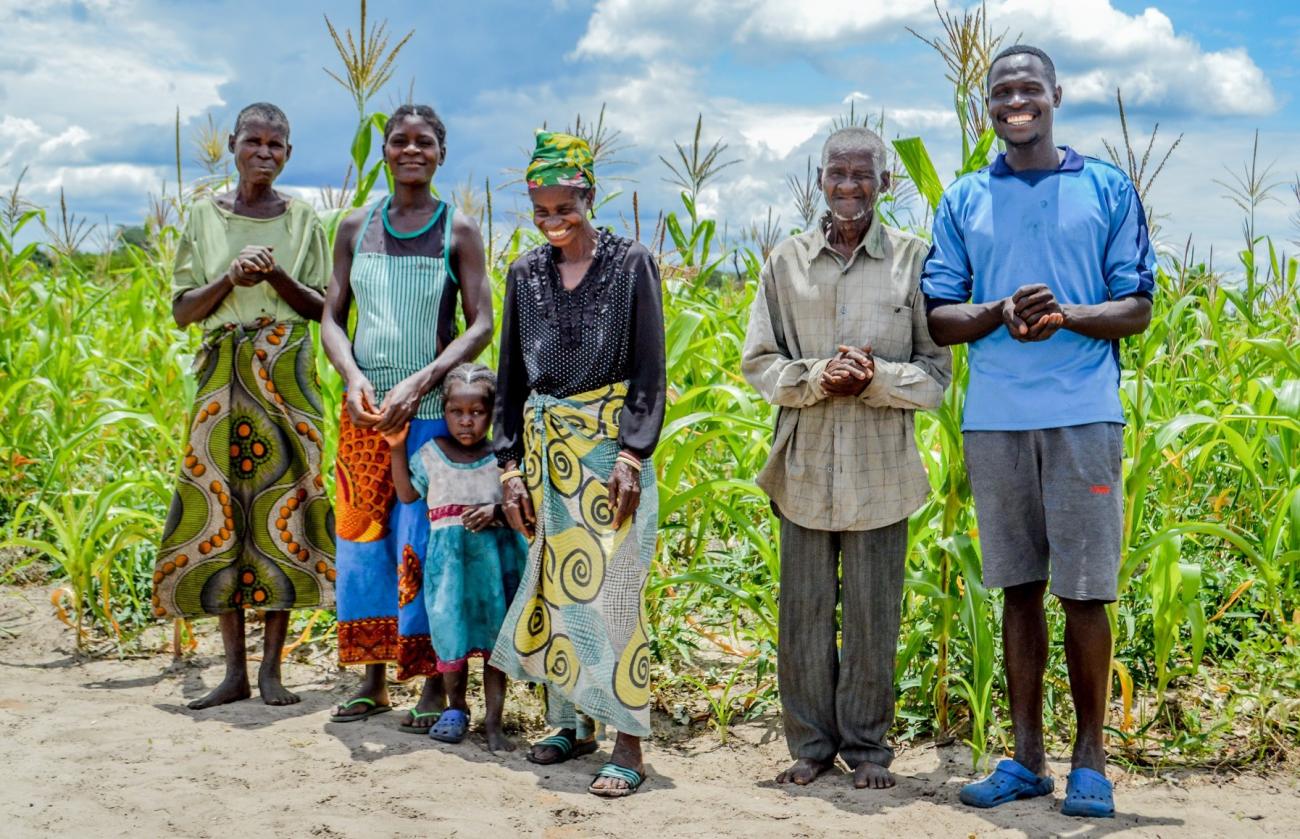“For the past two years, it’s been a gamble planting crops. We either have to deal with sandy soils, drought or floods,” says Monde, a 22-year-old smallholder farmer who lives with his wife, two children and grandparents in Shangombo district.
Shang’ ombo is a remote district in Zambia's Western Province, where over 53,000 people struggled to put food on their tables during the last two farming seasons following extreme drought and flash floods.
But Monde does not let sandy soils and frequent extreme weather events stop him from achieving his goal of ensuring he harvests enough food to feed his family.
He is hopeful of his harvests this year, as he is part of the World Food Programme’s (WFP) project funded by Germany helping over 104,000 smallholder farmers recover from the 2018/19 drought that left 2.3 million people in need of food assistance, as well as build their resilience against future shocks.
Each farmer has been provided with drought-tolerant seeds – including cassava, cowpea, sorghum and orange maize seeds – to help them plant this season and build their resilience against extreme weather events.
The farmers have also been encouraged to adopt conservation agriculture to increase their yields – a farming technique that promotes minimal soil disturbance, crop diversification and the use of organic fertilizer.
“When I received cowpea and orange maize seeds, I was very anxious because we experienced drought and flooding for the past two farming seasons. But WFP encouraged us to adopt conservation agriculture to help us plant in times of uncertainty and help our crops retrain water,” said Monde.
“I am expecting to harvest at least 40-50kg bags of orange maize, which will help me take care of my family. I have never grown cowpeas before, so I’m unsure how much I will harvest,” Monde said.
To support farmers after the harvest, WFP is helping farmers access low-cost technologies to reduce post-harvest losses –as high as 40 percent in Zambia.
These technologies include airtight bags called PICS bags – helping farmers reduce food losses and store crops until market prices are higher.
But market access is a challenge for thousands of farmers like Monde.
The long and small dusty road to Shangombo is tedious, bumpy and sandy. When it rains, the sandy patches form thick mud, which easily makes the road impassable even to off road vehicles.
Most traders and transporters are reluctant to supply and collect produce from Shangombo due to the high cost of last mile efforts required, contributing to the district's high vulnerability and poverty levels, which soar as high as 82 percent.
WFP is working the Zambian Government to help form farmer clubs, where farmers bulk their crops to attract larger buyers and make the journey worthwhile. Farmer clubs are provided with training in quality control to ensure crops meet market demands.
“This year, I joined a farmer club of 11 members. I’m hopeful that the group will make it easier for us to sell our crops collectively at a good price,” Monde added.




